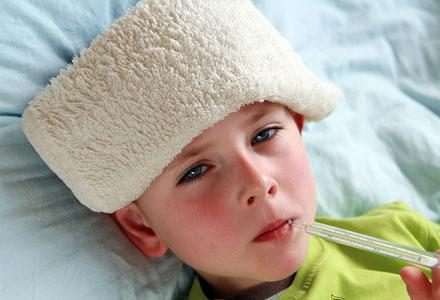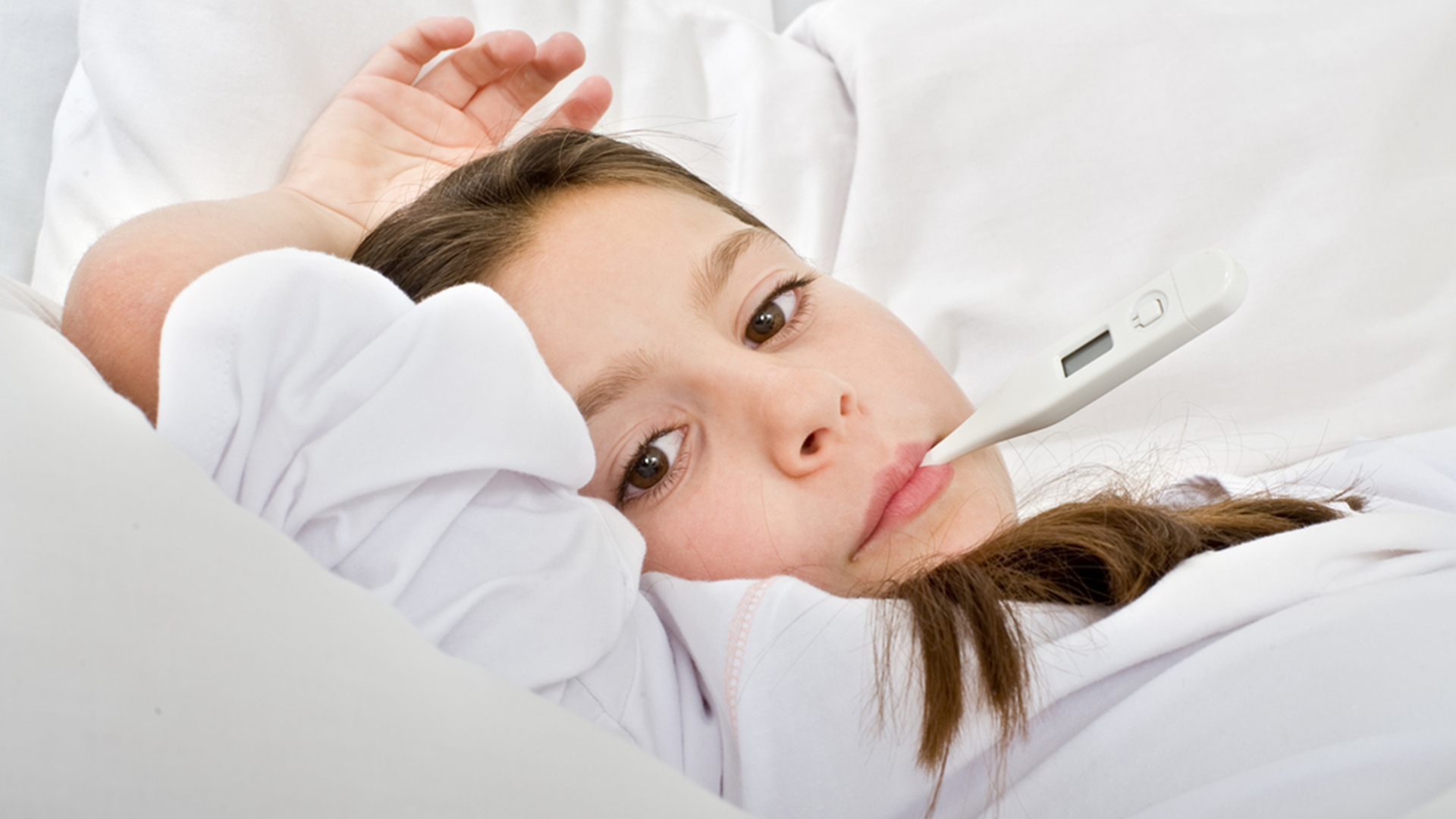Babies and children have a normal temperature of about 36.4°C (97.52°F), although it may vary slightly for each child. A fever is defined as a high temperature of 38°C (100.4°F) or more when taken rectally. Every kid gets a fever from time to time. It is one of the most common concerns for parents to bring a child to the emergency department. Fever itself is not an illness, it is a symptom or a sign. It is one of the body’s natural reactions in order to fight infections, such as coughs and colds. It stimulates the body’s defense mechanism to fight and damage the cause of the infection. It usually causes no harm and can actually be a good thing, unless it is persistently and extremely high or lasting more than a week. In this case, fever may be a sign of a serious illness.
Numerous factors can cause a high temperature in children, such as tonsillitis, chickenpox, certain medicines or vaccinations, heart stroke, blood transfusion, some kinds of cancer, autoimmune disease, or disorder in the brain.

The following are some signs to check a high temperature or if your child is experiencing a fever.
- Your child is not as active or talkative as usual.
- Your child’s forehead, tummy, or back feel hotter than usual. Measure the temperature by a digital temperature.
- Your child has red cheeks.
- Your child feels sweaty or damp.
- Your child seems less hungry, thirstier, and fussier.
Not all fevers need to be treated in healthy kids. However, high fever can make your child feel uncomfortable. Treating your children will help relieve discomfort but will not help the body get rid of the infection any faster. Seizures from fever, known as febrile seizures, can develop in children between the age of 6 months to 5 years. If your child experiences a febrile seizure, it will likely happen again. However, the child usually outgrows the febrile seizure and it does not mean that your child has epilepsy.
You can decrease your child’s fever by giving anti-fever medicine. But it is important not to give your child aspirin as it has been linked to a serious disease known as Reye syndrome. Usually, you can look after the child at home and the temperature should go down within 3 to 4 days. Here are some things you can do when your child has a fever:
- Dress your child in light clothes because excess clothing can trap body heat and will only cause your child’s temperature to rise. However, don’t undress your child to cool down.
- Give and encourage your child to drink plenty of fluids.
- Give your child a lukewarm bath but don’t use alcohol baths.
- Do not give your child paracetamol if your child is under 2 months.
- Do not give ibuprofen if your child has asthma, is under 5kg, or under 3 months old.
- Do not combine ibuprofen and paracetamol, unless a doctor tells you to.
- If you are really worried, it is advised to go see a doctor.
Although a fever is typically not dangerous, there are some warning signs you need to be aware of. These signs include:
- Your child is 3 months old or younger and has a temperature of 38°C (100.4°F) or higher.
- Your child has a reoccurring fever above 40°C (104°F).
- Your child is under 2 years of age and experience a fever of 38°C (100.4°F) that lasts more than a day.
- Your child is 2 years old or older and experiences a fever of 38°C (100.4°F) that lasts more than 3 days.

If the signs above happen to your child it is best to go to a doctor or an emergency department. In addition, there are also some signs where you need to call for an emergency immediately, including:
- Your child is having trouble breathing.
- Your child has blue skin and lips.
- Your child has a seizure.
- Your child has a rash that looks similar to bruises, usually grey or blue.
- Your child has a headache, a stiff neck, or vomiting.
- Your child is limp, drowsy, hard to wake, and unresponsive.
- Your child is bothered by the light.
